Do You Have Lice Or Dandruff?
An itchy scalp and white objects in your hair can mean dandruff, or it might be head lice. To make sure you get it right, use our guide to spot the difference.
Almost everyone with an itchy scalp has wondered at some point if they have lice and need to bring out that bottle of oil. Those horror stories from school days are just too hard to forget. But while they share certain similarities – an itchy scalp being the most obvious – there are key differences that distinguish head lice from dandruff.
- How do you tell the difference between a Lice or a Dandruff?
- Treating Dandruff
- Treating Head Lice

Let’s Look At Three Differences You Can Use To Tell Them Apart.
1. Cause
The major difference between lice and dandruff is their cause. So understanding what they are is the first step.
Head lice are small parasitic creatures that feed off human blood. The saliva secreted by lice can irritate the scalp, being the main cause for itchiness and sores. They lay small eggs called Nits on your scalp and hair, propagating what you can characterize as a lice infestation. There are no causes of lice, they are not localised and can spread between people. That’s probably how you got it.
Dandruff, on the other hand, is caused by sensitivity to oleic acid. This acid is a by-product of the Malassezia Globosa microbe, which we all have on our scalps. This fungus breaks down excess oil on your scalp, which causes a reaction. It is localised and cannot spread from person to person. Not everyone is sensitive to oleic acid, but in some cases it can cause irritation, itching, and flakes.
2. Appearance and Signs
- If you look at it with the naked eye, they look quite similar. But there are tell-tale signs of how they can differ in appearance. It’s not hard to spot the difference between lice and dandruff, if you know what to look for:
- The white flakes caused by dandruff are excess skin flakes, and as such will not be attached directly to the hair – by contrast, teardrop-shaped lice eggs directly adhere to the follicle, often very close to the scalp.
- With lice, you’ll find red, bloody spots on your scalp. Dandruff is generally associated with patches of red skin. The dandruff fungus does not bite and suck blood.
- If you can see tiny black spots on your scalp, that is probably lice. It could be a birth mark, but it definitely isn’t dandruff.
- Itching is common to both lice and dandruff, but dandruff itching is usually when your scalp is on the dryer side. Lice itching can happen at any point, and is generally associated with a crawling sensation on your scalp.
- Adult head lice can actually be spotted, although it’s a bit difficult. Use a head lice comb on wet hair under good lighting for the best effect. A magnifying glass can be a great tool for this endeavour.
- The simplest way to tell dandruff vs lice – If it’s moving, it’s not dandruff. Dandruff falls out, it doesn’t crawl on your scalp and hair.
3. Location
Because Malassezia Globosa is distributed across the entire scalp, dandruff is not a localized problem: flaky dandruff patches can be found all over the scalp.
By contrast, head lice have definite preferences for their home. They’ll usually be found behind the ears and on back of the neck, both areas where they like to lay their eggs. Head lice symptoms are usually focused on these areas as well.
Now that you’ve done the hard work and know which of these conditions you have, it’s time to talk about treatment. First up: dandruff.
Treating Dandruff
Compared to head lice treatment, dandruff is fairly simple to deal with. Home remedies for dandruff exist and do a decent enough job to solve the problem. Aloe Vera, Apple Cider Vinegar, Neem, Lemon, all can be used in different quantities and applied to your head. These products lift the oil that is trapped on your scalp and wash them away.
A dandruff treatment shampoo will also help soothe the symptoms of dandruff, while helping to neutralize the cause and washing away any flakes. You need to keep your head clean of excess oil and dirt, which is one of the main causes of dandruff.
For best effect, use your anti dandruff shampoo every time you wash your hair. Dandruff is a chronic condition which will come back if untreated. Use the Head and Shoulders Neem anti dandruff shampoo to bring natural anti-fungal effects to your scalp and hair. Employing the Head and Shoulders 2 in 1 Active Protect shampoo and conditioner can also visibly reduce your dandruff, opening up your hair strands to let them breathe naturally.
Now, dealing with head lice is an entirely different story.
Treating Head Lice
Head lice hatch every seven to ten days, with a total life cycle of about four weeks. Any lice treatment, therefore, needs to take this into account. Start with an over-the-counter head lice solution, like insecticide shampoos. Most of these will target the hatched lice, so you’ll need to repeat the process every week or so to make sure you get them all.
While you do this, you should also invest in a metal or plastic lice comb. These fine-tooth combs are designed to remove the eggs and dead lice from the hair follicle, as they are the true causes of lice growing. You should use your comb every day for about an hour, cleaning the comb of nits and lice on a disposable tissue or towel between strokes.
Unfortunately, as we’ve mentioned, the lifecycle of head lice is about four weeks, so you’ll need to keep up treatment for at least this long to make sure you’re completely louse free. Make sure to soak your clothes, bedding, towels and combs in hot water to get rid of any lingering lice.
Whether it is Lice or Dandruff, neither feels great to have on your scalp. These can be the cause of many sleepless nights. But you should rest easy knowing that solutions exist to solve all of your head problems. It all begins with you taking care of your head.



